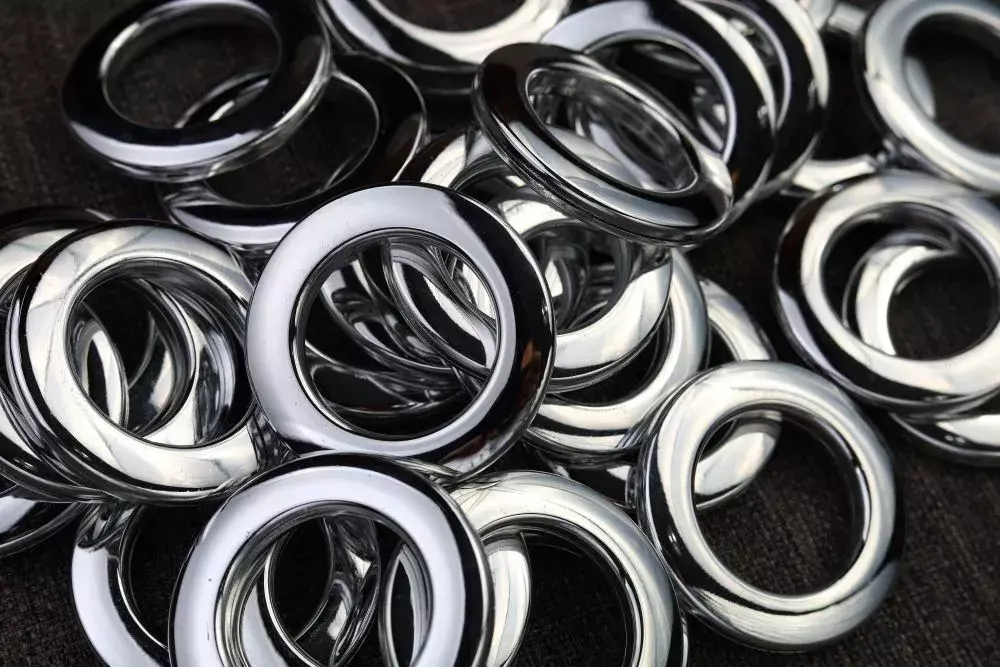Troubleshooting Common Issues When Working With Grommets
2024-02-06
Grommets are a highly useful tool for certain sewing projects. When your garment needs a functional hole that is reinforced and impervious to tearing, a grommet is your best friend. However, grommets can sometimes be tricky to work with, especially if you’re trying a new type of grommet.
Sometimes, grommets need a bit of extra help in order to fuse together the way they’re meant to. Grommets come with matching washers that cover the hole on the other side and lock together to create a lasting hold, but many sewing enthusiasts run into issues making their grommets and washers stick.
If you’re having issues using grommets in your sewing project, take a look at these solutions to common problems. The answer might be simpler than you think!
Add Fusible Interfacing
At times, the issue preventing your grommet from attaching to its washer is the fabric through which the hole is punched. If your fabric isn’t fused properly, your grommet will likely have trouble attaching to its washer since the space between them will be too great.
Fusible interfacing is a type of interfacing usually used to attach pieces of fabric to one another with glue and heat. You can use small pieces of fusible interfacing along the strip of fabric that your grommet will be attached to. This way, you’ll be able to make sure that loose fabric pieces aren’t the problem.
Add Superglue
Superglue is an effective way to make your grommets and washers stick if they’re having trouble connecting. Unlike fusible interfacing, superglue is used directly on grommets and washers or the hole they attach to instead of the surrounding fabric.
Try applying small amounts of superglue to the grommets themselves or dabbing it around the hole. Press your grommet and washer together through the opening, and hold them for at least a minute to allow the glue to dry. This should help to prevent your grommet from coming loose.
Use the Right Grommet Setter
Some grommets are designed to be pressed into place with their washers by hand. However, this method is usually best for smaller grommets, as well as grommets that are decorative rather than useful.
If the hole in your garment will bear any weight, such as the handles of a purse or the ties of a jacket, you will want to use a stronger grommet with a grommet setter. Grommet setters are sewing tools that apply the pressure needed to force a grommet into a washer.
If your grommet is giving you trouble and you’ve been applying it by hand, try incorporating a grommet setter into your routine. Just make sure that your grommet setter is the right size for the grommets you’re using and that you’re applying the grommet and washer straight on rather than at an angle.
Use a Hammer
In some cases, you may be struggling to get your grommet to stay in place even with a grommet setter. In this situation, you wouldn’t be the first to try pounding the grommet into place with a few hammer hits.
This level of force can be the difference that finally makes your grommet fuse to its washer. Make sure to use caution when applying this tool, as it could damage your grommet, washer, or garment.
Choose the Proper Grommet Size
Like any sewing trick, learning how to properly use grommets takes some trial and error. In situations where your grommet simply isn’t attaching, the solution may be something as easy as using a different-sized grommet.
Does the grommet seem too big or small for the hole you’re applying it to? Try swapping it out for another size to see if your grommet and washer can attach better.
Try a Different Grommet Material
Most grommets and washers are made of metal for durability and aesthetics. However, grommets come in other materials as well, such as brass or rubber. Depending on the material of the garment you’re working with, a different type of grommet might attach to the garment more easily and serve as the best fit for your needs.
Find All Kinds of Grommets at GoldStar Tool
Looking for your next grommet set? Find everything you need — from DIY ideas to new sewing accessories — at GoldStar Tool today.





